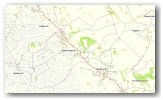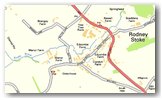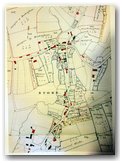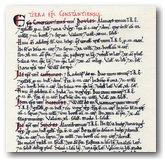
Rodney Stoke, just West of Wells, has been selected as our next village project. Alan Rowntree, who has written a history of the village, gave us a very worthwhile talk, suitably supplemented by a quick tour of the village. Barry's contribution regarding Westbury added another perspective to our investigations. We now have a base to work from and I'm sure we shall find the house features interesting when we get round to the surveys.
Location Maps



Domesday Entry - Lands of the Bishop of Coutances

(Rodney) Stoke.
Alfgeat Puttock held it before 1066. 5 hides and 1 virgate of land. It paid tax for 4 hides. Land for 5 ploughs, of which 2½ are in lordship; 2 ploughs there; 3 slaves; 9 villagers and 3 smallholders with 4½ ploughs and 1½ hides. A mill which pays 3s;meadow, 15 acres; pasture 2 leagues long and 1 league wide and 2s in addition; woodland 1 league long and 1 furlong wide. 20 mares; 5 cows; 20 pigs; 65 sheep; 68 goats. The value was £6; now £4.Roger Whiteng holds it now from the Bishop.
Roger Whiteng is apparently the same person as Roger of Courselles, who also held 98 other manors in
Somerset from the King. Alfgeat may have been Alfgeat the Priest, who held one hide in South Petherton.
This looks suspiciously as if he was a British priest who had his lands confiscated and handed over to
the Bishop of Coutances, and had been given just enough land to live on as compensation.
The reduced tax burden of 4 hides, when it had been rated at 5¼ hides again suggest that it had been
a church settlement.
The total of 12 tenants, with only 1½ hides between them indicates that they held relatively little land each, compared with the lord of the manor. A structure that remained for centuries.
Barry Lane, 27 January 2015
Rodney Stoke in Open DomesdayHouses
Photos taken on our village walk



